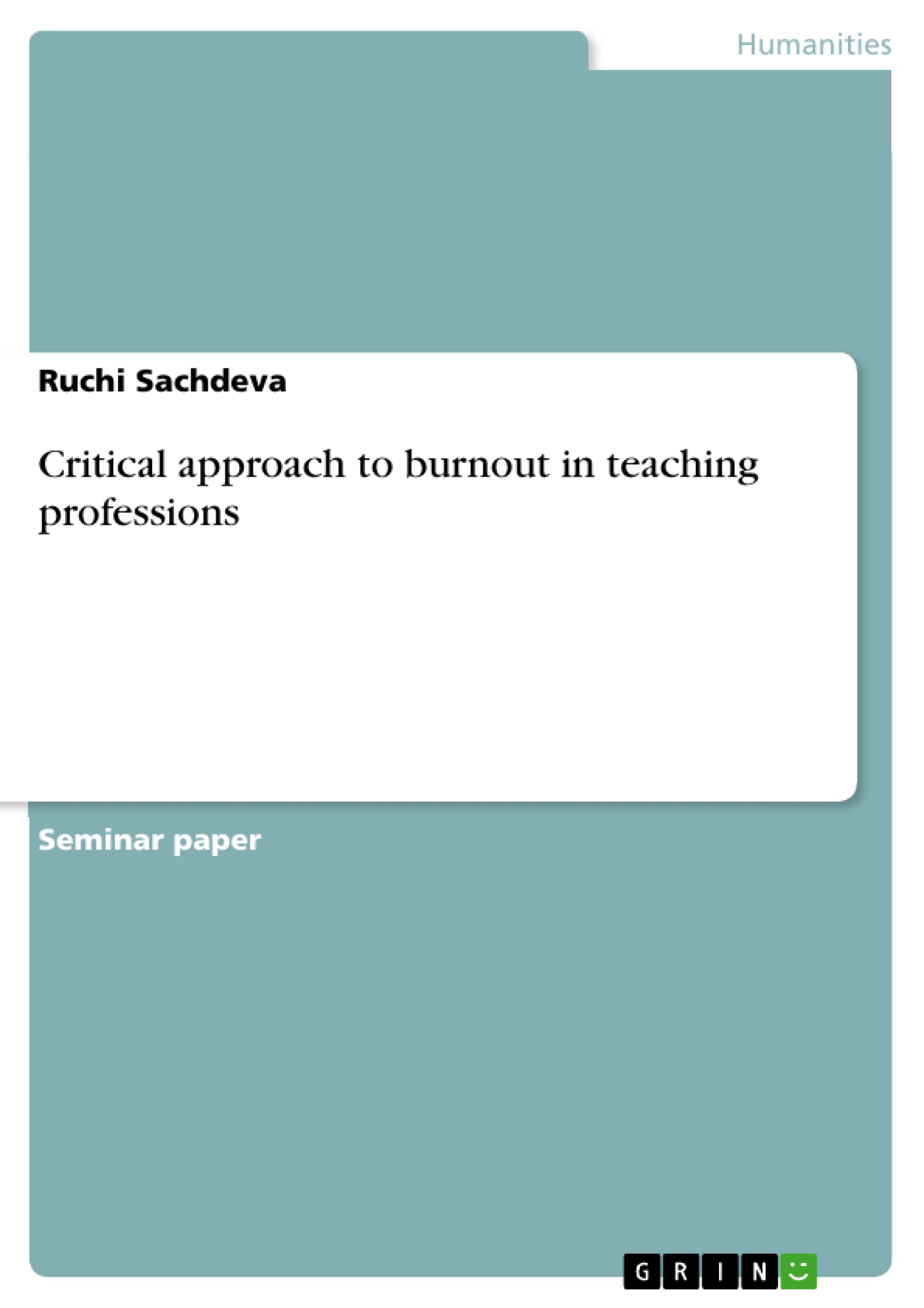In the present era of advancement, increasing attention has been paid to the phenomenon of burnout.
Burnout is a severe form of stress, i.e. it is the negative side of stress that leads to burnout. Stress is experienced as a restriction of our existence. Stress is also referred to as pressure, tense situations, uneasiness, a negative force which affects an individual, or the body of an individual, or the intellectual capacity of an individual.
There is, however, a difference between stress and burnout: stress has both positive and negative outcomes, whereas burnout has only negative outcomes. Stress can be useful or harmful depending on how an individual reacts in stressful situations.
Time and again, different concepts of burnout have come into existence. Is burnout thus a trendy term which is used to highlight boredom, depression, extreme stress?
Inhaltsverzeichnis (Table of Contents)
- Abstract
- Introduction
- Burnout
- Development of the Burnout Construct
- Definitions of Burnout
- Bibliography
Zielsetzung und Themenschwerpunkte (Objectives and Key Themes)
This text aims to explore the concept of burnout, specifically within the teaching profession. It delves into the definition, development, and different perspectives on burnout. The text also examines the relationship between stress and burnout, highlighting the negative outcomes associated with burnout.
- The development and evolution of the burnout construct
- The different perspectives on burnout, including clinical, organizational, social-psychological, and individual perception
- The distinction between stress and burnout, emphasizing the negative consequences of burnout
- The impact of chronic job-related stress on individuals in helping professions
- The role of emotional exhaustion, depersonalization, and reduced personal accomplishment in burnout
Zusammenfassung der Kapitel (Chapter Summaries)
- Abstract: This section provides a brief overview of the text, focusing on the phenomenon of burnout as a severe form of stress with negative consequences. It highlights the distinction between stress and burnout, emphasizing that while stress can have positive or negative outcomes, burnout only has negative impacts.
- Introduction: This section introduces the concept of stress, tracing its historical understanding and its impact on individuals. It discusses the various definitions and perspectives on stress, emphasizing its influence on both physical and emotional well-being. The introduction also highlights the importance of understanding how individuals respond to stress and how stress can be both positive and negative depending on the individual's interpretation and coping mechanisms.
- Burnout: This chapter delves into the concept of burnout, exploring its development and different theoretical perspectives. It outlines the key dimensions of burnout, including emotional exhaustion, depersonalization, and reduced personal accomplishment. This chapter also examines the historical evolution of the burnout construct, highlighting the contributions of key figures like Freudenberger, Maslach, and Jackson. The chapter provides a comprehensive overview of the various definitions and perspectives on burnout, emphasizing its negative impact on individuals and organizations.
Schlüsselwörter (Keywords)
The primary focus of this text is on burnout, specifically within the teaching profession. Key terms and concepts include stress, emotional exhaustion, depersonalization, reduced personal accomplishment, chronic job-related stress, helping professions, and the Maslach Burnout Inventory (MBI). The text also explores the different theoretical approaches to understanding burnout, including clinical, organizational, social-psychological, and individual perception.
- Quote paper
- Ruchi Sachdeva (Author), 2016, Critical approach to burnout in teaching professions, Munich, GRIN Verlag, https://www.grin.com/document/340280



